How to Determine the Minimum Charging Current for a 200Ah Battery
Calculating the Minimum Charging Current for a 200Ah Battery
Proper charging is essential for maintaining the longevity and performance of any battery, especially when dealing with large-capacity units like a 200Ah Battery. Understanding how to calculate the minimum charging current not only helps you maximize battery lifespan but also ensures safety and system efficiency. In this comprehensive guide, we explore the core concepts, mathematical methods, and practical considerations for determining the minimum charging current for a 200Ah Battery in various contexts including solar systems, RVs, off-grid applications, and backup power.
- Basics of Charging a 200Ah Battery
- Factors Affecting the Charging Current of a 200Ah Battery
- Calculating the Minimum Charging Current for a 200Ah Battery
- 200Ah Battery Charging Stages and Current
- Charger Selection for a 200Ah Battery
- Solar Charging a 200Ah Battery
- Real-World Charging Scenarios for a 200Ah Battery
- Safety Guidelines When Charging a 200Ah Battery
- Maintenance Tips for Prolonging 200Ah Battery Life
- Advanced Considerations for 200Ah Battery Charging
Basics of Charging a 200Ah Battery
What Does 200Ah Mean?
A 200Ah Battery refers to a battery with a storage capacity of 200 ampere-hours. This means it can deliver 200 amps for one hour or 20 amps for 10 hours. The amp-hour rating provides a basic understanding of the battery’s energy storage capability, but when it comes to charging, we need to dive deeper into voltage, current, and chemistry.
Importance of Charging Current
Charging current is the rate at which energy is supplied to the battery. For a 200Ah Battery, supplying the correct amount of current is crucial. Too little current could result in inefficient charging or sulfation in lead-acid batteries, while too much current may overheat the battery or reduce its lifespan.
Factors Affecting the Charging Current of a 200Ah Battery
Battery Chemistry
Different chemistries have different charging characteristics:
Lead-Acid (Flooded, AGM, Gel): Typically charged at 10–20% of capacity.
Lithium-ion: Can handle higher charging currents, sometimes up to 100% of capacity.
Nickel-based batteries: Less common for 200Ah applications but still follow unique charge profiles.
Voltage System
The voltage of your system (12V, 24V, 48V, etc.) impacts the charging equipment and current requirements. For a 12V 200Ah Battery, the charging current recommendations differ from those of a 24V or 48V system.
Depth of Discharge (DoD)
How deeply the battery has been discharged also determines how much current is needed. A deeply discharged 200Ah Battery might require a higher initial current (bulk charge) before tapering down during absorption and float stages.
>>See also How Long a 5kWh Battery Will Last
Calculating the Minimum Charging Current for a 200Ah Battery
Rule of Thumb for Lead-Acid Batteries
The general rule of thumb for lead-acid batteries is:
Charging Current = Battery Capacity × Charging Factor
Minimum Charging Current = 200Ah × 0.1 = 20 Amps
This assumes a 10% rate of charge. For maintenance charging, 5% (10 Amps) might be sufficient, but it’s always safer to start with 10% unless the battery manufacturer specifies otherwise.
Lithium-Ion Charging Rates
Lithium-ion batteries can accept higher charging currents. Some manufacturers recommend charging at up to 1C (200 Amps for a 200Ah Battery), but for longevity, most suggest 0.5C or 0.3C, which would be 100 Amps or 60 Amps respectively.
Formula-Based Calculation
Use the formula:
I = C × r
I = Charging current (in Amps)
C = Capacity in Ah (200Ah in this case)
r = Recommended charge rate (0.1 for 10%)
So:
Minimum: I = 200 × 0.05 = 10 Amps
Recommended: I = 200 × 0.1 = 20 Amps
Fast: I = 200 × 0.3 = 60 Amps
200Ah Battery Charging Stages and Current
Bulk Charging Stage
This is the initial phase where the battery accepts the highest current. A 200Ah Battery can receive 20–60 amps depending on its chemistry.
Absorption Stage
As the battery nears full charge, the current tapers off while voltage is held constant. This protects the 200Ah Battery from overcharging.
Float Stage
A low float voltage is applied to maintain the charge. In this phase, the current may drop below 2–5 amps for a 200Ah Battery, just enough to counteract self-discharge.
Charger Selection for a 200Ah Battery
Choosing the Right Charger Current
Select a charger that can at least meet the minimum 10% capacity rule:
10 Amps for slow charging
20 Amps for standard
30+ Amps for faster turnaround
Voltage Compatibility
Ensure your charger voltage matches your 200Ah Battery system voltage (12V, 24V, etc.). Mismatched chargers can damage the battery or reduce efficiency.
Smart Chargers
Using a smart charger with adjustable current and voltage is ideal for a 200Ah Battery, as it can automatically adapt charging profiles and protect against overcharging.
Solar Charging a 200Ah Battery
Solar Panel Sizing
To charge a 200Ah Battery using solar, calculate daily energy requirement and solar generation:
Energy Needed = 12V × 200Ah = 2400Wh (2.4kWh)
Assuming 5 hours of good sunlight, required panel wattage = 2400Wh ÷ 5h = 480W minimum.
Charge Controller Rating
Choose an MPPT or PWM controller rated for at least the minimum current:
For 10% rate: 20 Amps
Controller voltage must match battery bank
Practical Setup Example
Battery: 12V 200Ah
Panel: 600W (2 × 300W)
Charge Controller: 40A MPPT
Output Current: ~25–30 Amps (ideal for efficient charging)
Real-World Charging Scenarios for a 200Ah Battery
Off-Grid Cabin
A cabin powered by a 200Ah Battery needs consistent solar input. Choosing a 600W solar panel with a 30A MPPT controller ensures reliable energy availability.
RV Power System
An RV using a 200Ah Battery often pairs it with a 30A DC-DC charger from the alternator and 400–600W solar for flexible charging while driving or parked.
Emergency Backup
For home or office backup, a 200Ah Battery may be charged using an inverter-charger combo. A 20A charge rate ensures readiness without overtaxing the battery.
>>See also How to Build a Single Cell Swappable Power Bank
Safety Guidelines When Charging a 200Ah Battery
Prevent Overcharging
Using a charger with an automatic shutoff or multi-stage charging profile is essential to avoid damaging the 200Ah Battery.
Avoid Undervoltage
Never let a 200Ah Battery fall below its cutoff voltage (e.g., 10.5V for lead-acid). Undervoltage accelerates wear and reduces capacity.
Use Proper Cables
High current charging requires thick cables. Undersized wires can overheat and create fire risks.
Ventilation and Temperature Monitoring
Batteries release gases and heat during charging. Ensure good airflow and temperature monitoring, especially when charging indoors.
Maintenance Tips for Prolonging 200Ah Battery Life
Regular Inspections
Check for terminal corrosion, swelling, or leakage. These signs indicate issues with charging or battery health.
Balanced Charging
Avoid partial charges. Occasionally charging your 200Ah Battery to 100% helps balance cell voltages and maintain performance.
Storage Conditions
Store in cool, dry places at 50–80% state of charge if unused for long periods. Over-discharge or overcharge during storage damages the 200Ah Battery.
Avoid Deep Discharge
Keeping depth of discharge (DoD) below 80% extends battery lifespan. Deep cycles reduce the total number of charge/discharge cycles.
Advanced Considerations for 200Ah Battery Charging
Battery Management Systems (BMS)
Lithium 200Ah Batteries usually include a BMS that manages charging and protects against overcurrent, overvoltage, and overheating. Ensure your charger is BMS-compatible.
Charging in Series and Parallel
Series: Increases voltage (e.g., 4 × 12V = 48V). Charger must match total voltage.
Parallel: Increases capacity (e.g., 2 × 200Ah = 400Ah). Charger current may need to double.
Equalization Charging
Lead-acid 200Ah Batteries benefit from equalization—periodic high-voltage charging to remove sulfation and balance cells. Only perform this under supervision.
Calculating the correct minimum charging current for a 200Ah Battery is a critical aspect of battery maintenance, performance, and safety. Whether you're using lead-acid, lithium-ion, or any other chemistry, following the correct charging guidelines will help extend your battery's useful life. Always consider the application, environment, and battery specs when determining your optimal charging setup.
By applying these principles, you ensure that your 200Ah Battery receives the proper care and power it needs to operate efficiently. From RVs and off-grid cabins to solar installations and emergency systems, properly charging a 200Ah Battery ensures reliability, safety, and long-term performance.

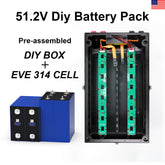

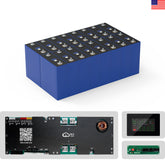

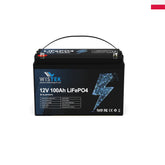
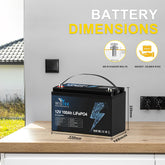
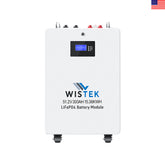
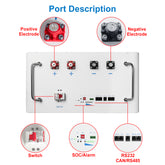
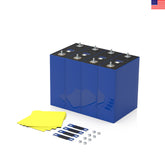
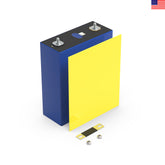
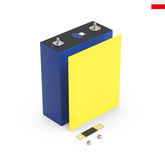

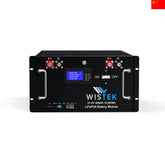
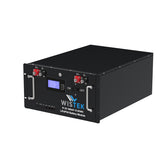
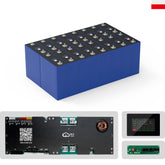








Leave a comment
All blog comments are checked prior to publishing